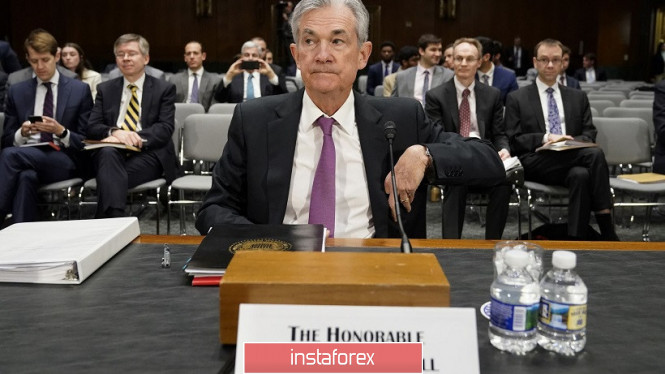The euro-dollar pair lost more than 150 points last week, dropping to the bottom of the 10th figure. Weak German data, a negative outlook by the European Commission and dovish statements by ECB representatives put pressure on the euro. In turn, the dollar was in demand amid a general appetite for risky assets. Representatives of the US regulator made it clear that they are satisfied with the current level of interest rates, thereby offsetting the fears of traders about another round of monetary easing at the beginning of next year.

This week, bears of the EUR/USD pair can either strengthen their success (by pulling down the EUR/USD to the bottom of the ninth figure) or give the initiative to the bulls, which will return the price to the area of the 11th figure. The coming days will be full of informational issues, so we can say that increased volatility is guaranteed.
On Monday, the EUR/USD pair will be trading in low liquidity due to national observances in several countries of the world. In particular, today is Veterans Day in the US, Memorial Day in Canada, and Armistice Day in France. This factor will affect today's trading. Traders will not rush to open large positions in anticipation of subsequent events.
On Tuesday, November 12, all attention will be focused on the mood indexes in the business environment from the ZEW Institute. Both in Germany and the eurozone as a whole, positive dynamics are expected, although indicators will still remain deep in the negative area. But after a five-month consecutive decline, any growth dynamics will be perceived by the bulls of the pair "with a bang". In addition, the representative of the Federal Reserve, Richard Clarida, will speak on Tuesday, who will comment on the latest releases. In early November, he already voiced his position - in his opinion, bearish risks for the US economy still prevail, however, all decisions of the regulator will continue to depend on the incoming data and be taken "on the spot". I believe that tomorrow he will repeat similar points, putting slight pressure on the greenback.
The most important day of the week will be Wednesday - November 13th. Firstly, on this day, the Fed chief will begin his two-day speech in the US Congress. At first, Jerome Powell will present this report to the Financial Services Committee of the House of Representatives of the Congress, then to the Committee on Banking, Housing and Urban Affairs. Let me remind you that, following the results of the last Fed meeting, Powell unequivocally hinted that the further steps of the US regulator will largely depend on the dynamics of inflation growth. He emphasized that the Federal Reserve would not even think about raising the rate until inflation showed steady and stable growth. Weak inflation and continuing uncertainty regarding trade relations between the United States and China prevent the Federal Reserve from putting an end to this issue. The short-term cycle of interest rate adjustment has been completed, but the regulator, apparently, is ready for further steps in this direction.

On the other hand, last week the dollar strengthened amid hawkish statements by Fed representatives. In particular, the head of the Federal Reserve Bank of San Francisco, Mary Daiy, said yesterday that she did not see the need for further rate reductions, since it was "at the right level." At the same time, Daly fully supported all three rate cuts this year. Earlier, another representative of the dovish wing of the Federal Reserve - the head of the Federal Reserve Bank of Minneapolis Neil Kashkari - said that he was satisfied with the current rate. Kashkari, as you know, is one of the main supporters of monetary easing by the US central bank.
In other words, Jerome Powell can knock down the greenback with his rhetoric, making it possible for EUR/USD bulls to return to the area of the 11th figure. But if he repeats the theses of his above colleagues, the dollar will continue the rally, settling in the framework of the 9th figure when paired with the euro (up to 1.0905 - this is the bottom line of the Bollinger Bands indicator on the weekly chart).
However, Wednesday is important not only due to Powell's speech - 2.5 hours before his "benefit", the most important release for the dollar will be published. We are talking about the publication of data on the growth of American inflation. The general consumer price index should show a positive trend, rising to 1.8% on an annualized basis and to 0.3% on a monthly basis. Core inflation, excluding food and energy prices, can also show minimal growth in monthly terms (from 0.1% to 0.2%) and remain at the same level (2.4%) in annual terms. If the real numbers fall below enough predicted values, the dollar may again fall under a wave of sales. Weak inflation will affect Fed members, who are forced to reckon not only with the dynamics of the labor market, but also with inflation dynamics, especially in the light of Powell's rhetoric following the October meeting of the Fed. Therefore, the disappointing CPI report will in any case put downward pressure on the US currency.

On Thursday, the head of the Fed will continue his two-day speech in Congress. In addition, quite important data from China (industrial production volume) and the US (producer price index) will be published on this day. We will also find out the second estimate of GDP growth in the eurozone and Germany in the third quarter, as well as the German inflation rate.
On Friday, the market will trade under the impressions of previous events. However, Friday's economic calendar isn't completely empty: the United States will publish data on retail sales. Last month, for the first time in March, the overall indicator fell into the negative area, but October figures should show positive dynamics - both the total retail sales and without taking into account car sales should go above zero (0.1 and 0.3%, respectively).
Thus, the focus of eEUR/USD traders will be fon the key events of the week (Powell's two-day speech and release of data on the growth of US inflation). The prospects for China-US relations will also affect the pair. According to preliminary information from the Chinese side, a new trade agreement between the United States and China, under which the US will abolish import duties from China ($ 56 billion), may be concluded on December 15. If the Americans confirm the seriousness of the voiced intentions, the dollar will receive background support. In general, by the end of the week, the EUR/USD pair will either go to the bottom of the ninth figure (the lower line of the Bollinger Bands indicator on the weekly chart) or return to the mark of 1.1150 (the middle line of Bollinger Bands, which coincides with the Kijun-sen line on the same timeframe) .
The material has been provided by InstaForex Company - www.instaforex.com